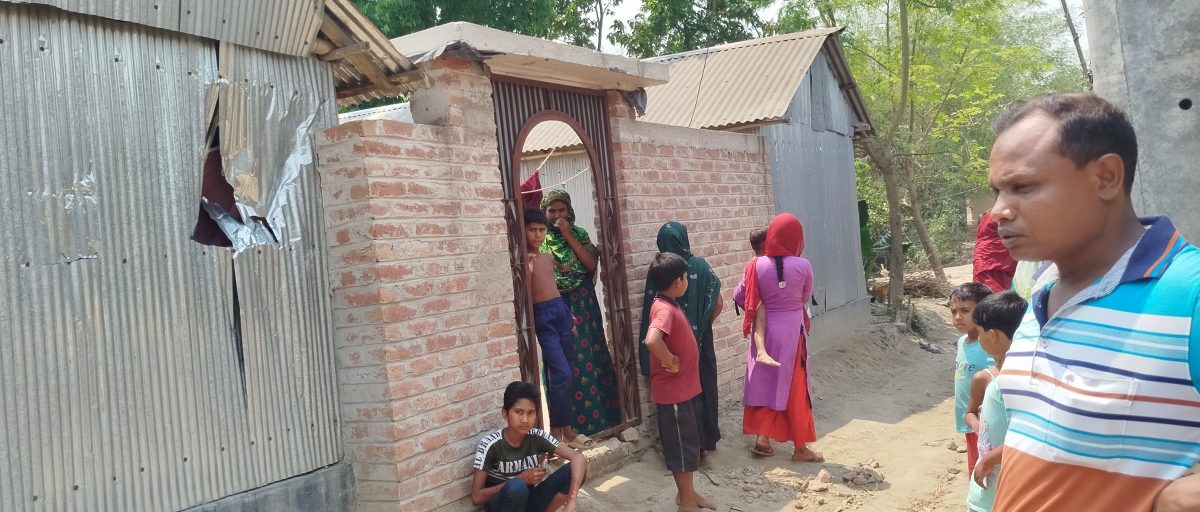How Much Risk is the Nature of the Future?

The policy adopted in the Paris Climate Agreement to limit the rate of global warming to one and a half degrees Celsius is expected to exceed that limit in the next five years. Scientists fear that the global temperature will rise by more than one and a half degrees Celsius, although this increase in temperature will never be permanent.
The World Meteorological Organization (WMO) released the data on Thursday following a recent assessment of global climate trends.
According to the WMO and the British Meteorological Department, the average annual global temperature is 40 percent more likely to rise by 1.5 degrees Celsius than pre-industrial temperatures.
In 2015, nearly 200 countries signed the Paris Climate Agreement, pledging to take steps to ensure that average global warming does not rise more than two degrees Celsius from the pre-industrial era. However, the fear of a rise in temperature will be true, assuming that the limit was set at a maximum of one and a half degrees Celsius.
In the last 100 years, the average temperature of the earth's surface has risen by about 1 degree Celsius. According to scientists, all the floods, storms and fires in the world in the last ten years have been due to rising temperatures or global warming. Deforestation, setting up of factories, pollution and urbanization have created this chronic animosity in the weather. As a result of the increase in the average temperature of the world, various natural calamities such as floods, thunderstorms, cyclones, tidal waves, etc. have hit the population constantly. The weather has also changed in Bangladesh due to natural causes. Untimely rains, when the rainy season is dry, rain in one area, not in another.
There is no winter even in winter. Extreme levels of heat, flooding, tornadoes, hurricanes and cyclones are causing alarming levels. Scientists and researchers fear that by 2025, about 17 percent of Bangladesh's land will be submerged in the Bay of Bengal. Human life, along with other living things, is threatened today by natural hostilities. Whether or not this world will be habitable in the future is a matter of great concern now!
Greenhouse gases, such as carbon dioxide and methane, are constantly accumulating in the atmosphere. This is creating a greenhouse effect by accumulating such deadly harmful gases. Chlorofluorocarbons or CFCs and other gases are gradually eroding the weight of the outer gas mantle. Weight loss will be followed by fatigue and constant tiredness. Observing the recent situation, the scientists said that the reaction of this change in the atmosphere to the world's environment will be fatal in the coming days. That's why global temperatures could rise by 1 degree to 3.3 degrees in the next five decades.
This catastrophic weather will disrupt the normal life of the people and it is also a great threat to nature. Natural and man-made risks are ultimately bringing about erosion, earthquakes, water and soil salinity, pollution and arsenic contamination. Cyclones and tidal surges are causing erosion in coastal areas. The sedimentary rocks of the land are doing great damage.
In the coastal areas, underground deep tube well water has become the only source of drinking water at present. But the extraction of this water is bringing tremendous risks to nature. Climate change is melting mountain peaks and polar ice caps. As a result, the sea level has started rising. At one time the salt water of the sea would flood vast areas. Which will have an impact on public life around the world.
Considering the impending disaster, Bangladesh is moving forward with various initiatives. In particular, 500 million food has been allocated to Bangladesh so far to address the growing situation of food security and low carbon emissions. One of the major successes of this plan is the country's early warning system in case of natural disasters. Due to this, the people of the coastal areas of Bangladesh are getting the opportunity and time to take shelter in safe shelter before the disaster.
More than 70 percent of Bangladesh's total expenditure on climate change is being raised from the domestic sector. Development partners are giving the rest. However, where one-third of the people in Bangladesh are at risk of displacement due to rising sea levels, larger initiatives need to be taken to address the situation. Socio-economic and natural measures need to be taken to adapt to adverse weather conditions.
Although the Paris Climate Agreement sets a safe limit of 1.5 degrees Celsius for global warming, it is feared that the rate of global warming will double by the end of this century. So in yesterday's announcement, climate experts have issued a warning.










